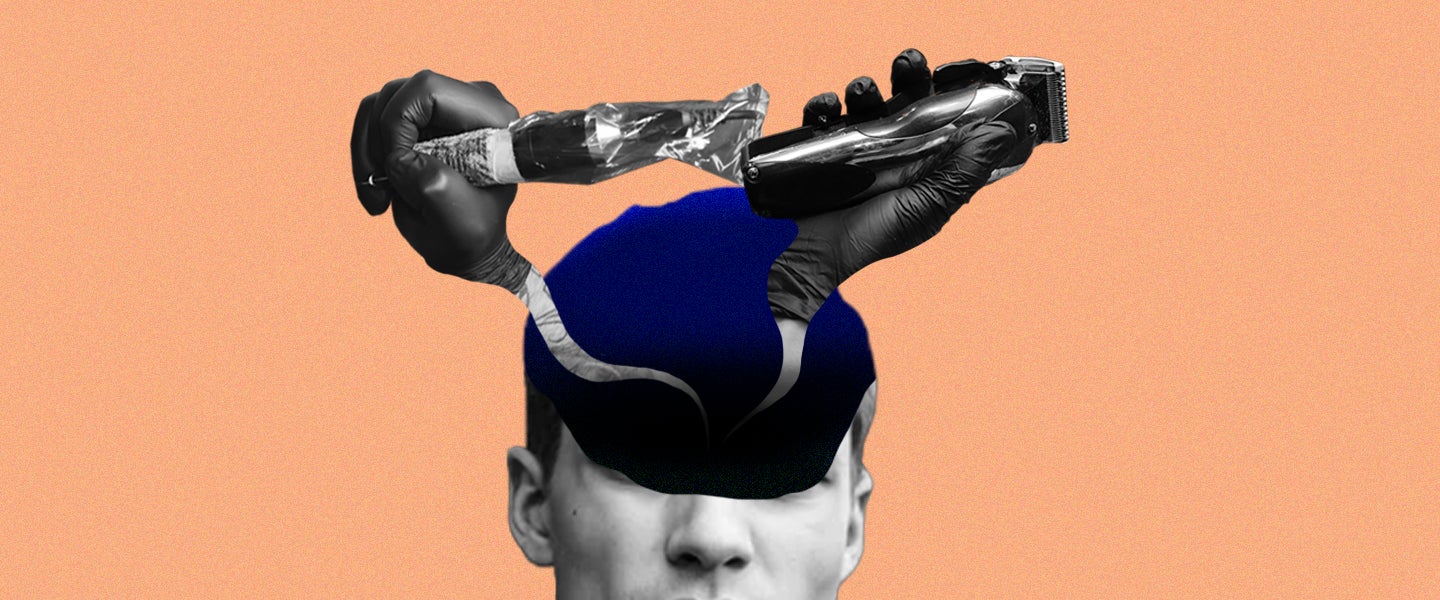Apart from essential workers and a limited number of people who can work from home, a massive chunk of our labor force has been pushed entirely out of work by the coronavirus and the consequent sheltering-in-place. Besides the most obvious problems that come from being unemployed — no pay and no job-sponsored health insurance — many workers are also concerned about the possible repercussions of neglecting their profitable skills for scores of workless months. They fear that when everything is up and running again, their ability to adequately do their jobs will be lacking, either because their expertise deteriorated during quarantine, or because their job could be overhauled by the coronavirus.
“I always feel a concern like that,” says tattooer Dillon Eaves, “even if I don’t work for a few days.” Likewise, production assistant Cruz Quinonez, who was recently furloughed, says, “My job is like 80 to 90 percent person-to-person interaction and problem solving, and I have no idea what the person-to-person service culture will be like when we come back. How do we practice customer service without constant interaction with people? The short answer is, we don’t.”
Thus, many of these workers are attempting to maintain their skills while waiting out the coronavirus outside of the workplace. “All we can really do is draw and paint right now,” Eaves explains. “As long as tattooers are doing that, the mind will be sharp, and the body will remember what to do. The more you paint and draw, the more you can conceptually speed through your artistic process.” Similarly, Sara Willner, hairdresser and owner of Salon Three, says many hairstylists have been attempting to stay sharp by cutting hair for family members who are also in quarantine, “watching videos and keeping up with our education.”
But while honing your skills at home might be manageable in some lines of work, as Quinonez suspects, there may be no way to prepare for how certain jobs, including his own, will be impacted by the coronavirus. “The culture around the coronavirus has changed, perhaps permanently, the way we approach our assistant work,” he explains. “Right before the shelter-in-place order, half of what I did every day was order catering and craft services for production. Simple tasks like serving lunch became complicated and time consuming.”
“It’ll be a weird dynamic coming back,” Quinonez continues. “Most TV shows are at least a few more months away from starting up again, and when they do, I think the coronavirus fallout will make them rely more on ordering delivery services. Nowadays, bulk delivery from Google, Amazon and Costco take care of a lot of shopping needs, and even catering through websites, like ezCater, have made it simple to do assistant-level work without having to leave the office. Post-coronavirus, people may feel safer ordering supplies and food this way, instead of sending people out to stores.”
Accordingly, not only is Quinonez afraid of not doing his job well when he comes back, he worries that his job might not exist. “My worst fear is that this will lead to cutting back on production assistants in general, and will end up leading to less jobs overall in a section of the industry that’s already volatile and sporadic at best,” he says. “More so than being rusty at work, I’m worried about my work being there at all when we return.”
With similar fears in the minds of many, most workers, rusty or otherwise, will be stoked to return to work, whenever that may be. “I’ll just be ecstatic to get back to it,” Eaves says. Efficiency and executive coach Nicola Brown agrees, saying, “Depending on how long they’ve been away from work or what their role is (or their home circumstances), I think a lot of people will be very enthusiastic to get back to work, and grateful to have work to do.”
As such, for many workers, the excitement to come back to work — and the impact that such excitement has on the work they do — could quickly trump any rustiness developed over months of not working. “When under stress, we often find comfort in the familiar, and many aspects of work will be familiar, even though we can’t expect to be returning to ‘normality’ in terms of things being exactly as they were,” Brown says. “Of course, we don’t know what the new normal will look like. Some people’s teams will be different, some organizations will have changed dramatically, some people’s hours or responsibilities will be altered.”
All of which means, when we do have a mass return to work, we could all benefit from expressing a little more patience and appreciation for the work people do, high-quality or otherwise. “It helps to keep a focus on what we do have control over, rather than what we don’t,” Brown explains. “We can’t control many of the big-picture elements and uncertainties, but we can control how we approach them. People will most likely have developed some new habits while being at home — many of us may need to find ways to be a little less hooked on our phones, social media, online news, etc. once we’re back at work. It will be helpful to bring some extra patience and compassion once we’re back in the workplace — we’re going through collective grief, shock, fear and loss, so people may not initially have the same reserves they’ve had in the past. I know we’re hearing it over and over, and it will be true at work, too: We’re going to need to be kind — both to ourselves and each other.”

